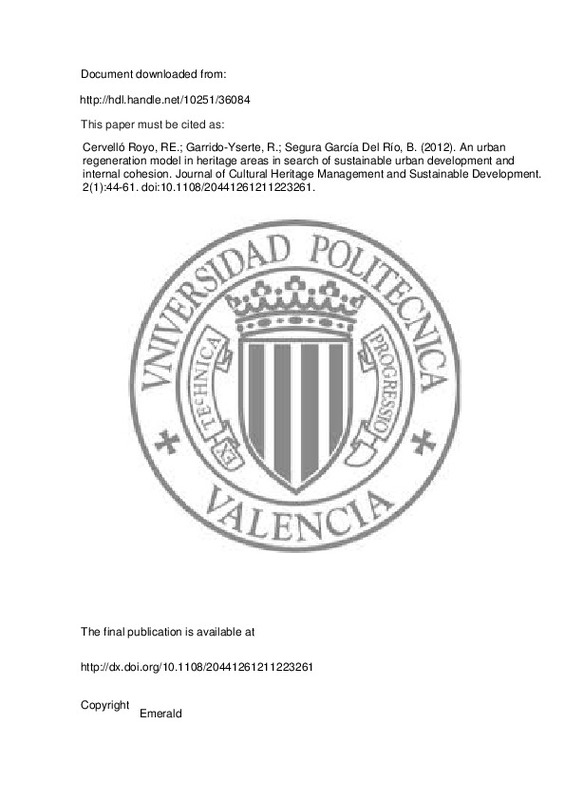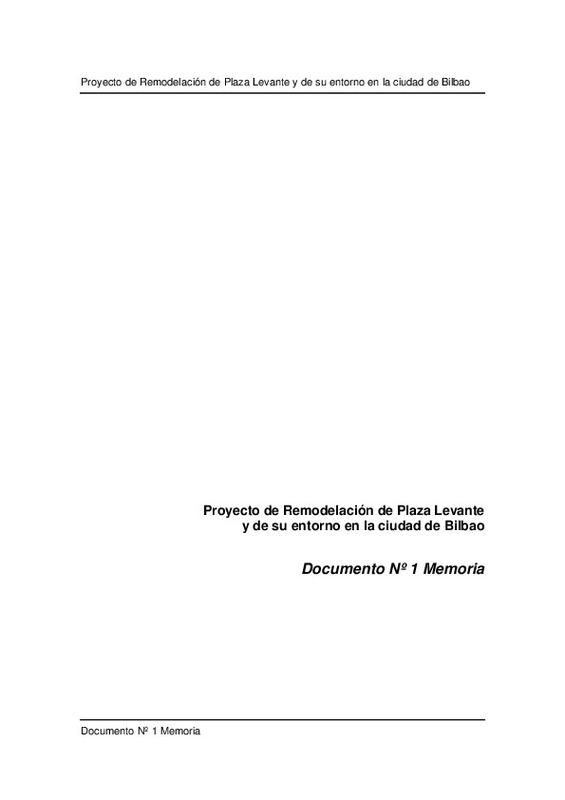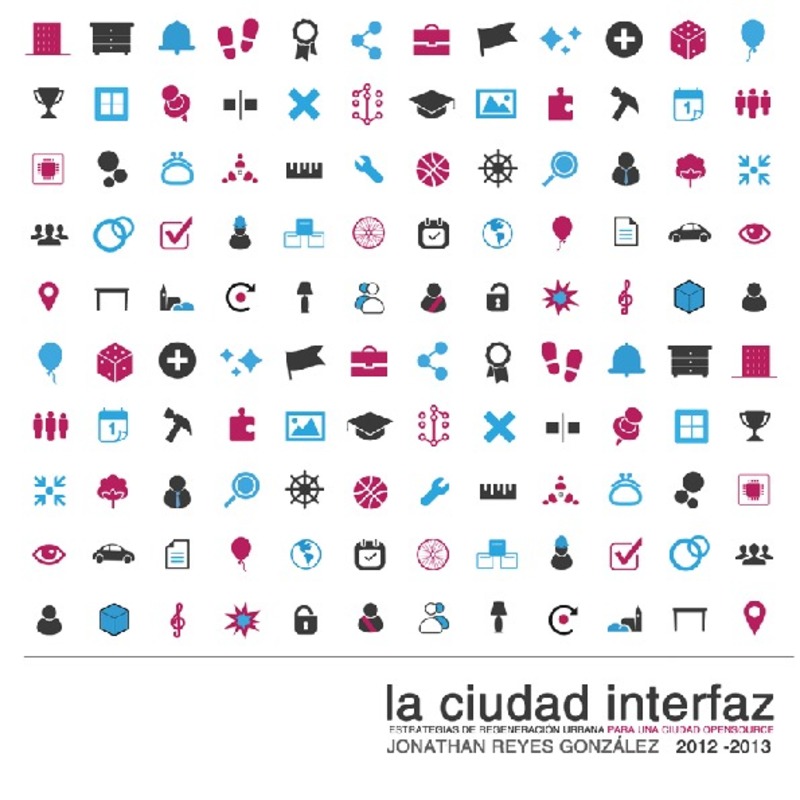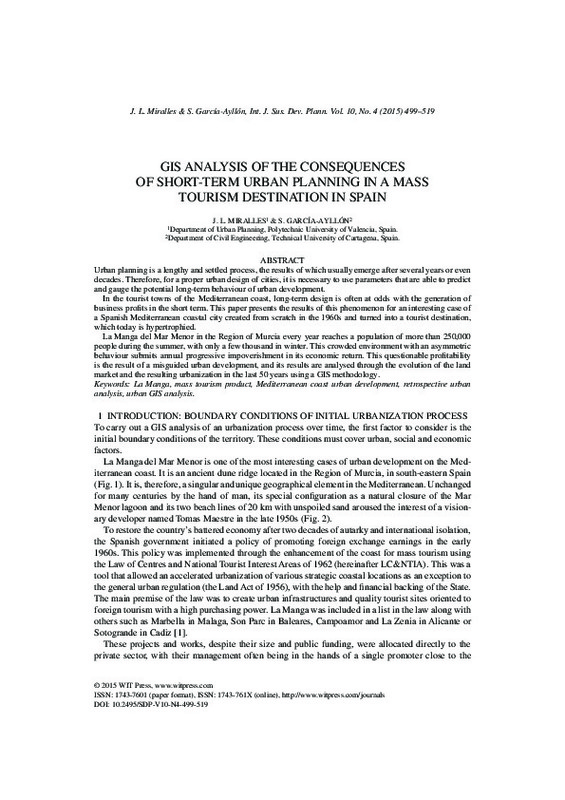JavaScript is disabled for your browser. Some features of this site may not work without it.
Buscar en RiuNet
Listar
Mi cuenta
Estadísticas
Ayuda RiuNet
Admin. UPV
An urban regeneration model in heritage areas in search of sustainable urban development and internal cohesion
Mostrar el registro sencillo del ítem
Ficheros en el ítem
| dc.contributor.author | Cervelló Royo, Roberto Elías
|
es_ES |
| dc.contributor.author | Garrido-Yserte, Rubén
|
es_ES |
| dc.contributor.author | Segura García del Río, Baldomero
|
es_ES |
| dc.date.accessioned | 2014-03-03T09:14:57Z | |
| dc.date.issued | 2012 | |
| dc.identifier.issn | 2044-1266 | |
| dc.identifier.uri | http://hdl.handle.net/10251/36084 | |
| dc.description.abstract | Purpose ¿ The purpose of this paper is to provide an analysis and an optimization model of the spatial impact for the externalities derived from urban regeneration and rehabilitation of degraded and segregated historic heritage areas. Design/methodology/approach ¿ From the amount invested and state intervention locations, an impact index is put forward. The spatial distribution of these impact indexes in the interventions' area of influence will be the basis for the analysis. Hence, by setting some specific objectives of the decision agent about this distribution homogeneity, and with the aim of avoiding inner segregation and to facilitate the sustainable urban development and cohesion of the neighborhood as a whole, a model which will allow the allocation of the budget available among the different locations fixed a priori is proposed. Findings ¿ It is found that by comparing the spatial distributions of impact indexes obtained in both situations, a measure of the urban regeneration and rehabilitation process and its impact can be obtained. Originality/value ¿ In order to favour the neighborhoods' internal cohesion and to avoid inner segregation, the model enables one to better address priority areas of intervention inside a historic heritage urban area and to better achieve sustainable urbanization by providing a more equitable and efficient managing of resources. | es_ES |
| dc.language | Inglés | es_ES |
| dc.publisher | Emerald | es_ES |
| dc.relation.ispartof | Journal of Cultural Heritage Management and Sustainable Development | es_ES |
| dc.rights | Reserva de todos los derechos | es_ES |
| dc.subject | Cultural heritage | es_ES |
| dc.subject | Heritage | es_ES |
| dc.subject | Historic cities | es_ES |
| dc.subject | Regeneration | es_ES |
| dc.subject | Spain | es_ES |
| dc.subject | Sustainable development | es_ES |
| dc.subject | Sustainable urban development | es_ES |
| dc.subject | Urban regeneration | es_ES |
| dc.subject | Urban rehabilitation | es_ES |
| dc.subject | Cities | es_ES |
| dc.subject.classification | ECONOMIA FINANCIERA Y CONTABILIDAD | es_ES |
| dc.subject.classification | ECONOMIA, SOCIOLOGIA Y POLITICA AGRARIA | es_ES |
| dc.title | An urban regeneration model in heritage areas in search of sustainable urban development and internal cohesion | es_ES |
| dc.type | Artículo | es_ES |
| dc.embargo.lift | 10000-01-01 | |
| dc.embargo.terms | forever | es_ES |
| dc.identifier.doi | 10.1108/20441261211223261 | |
| dc.rights.accessRights | Abierto | es_ES |
| dc.contributor.affiliation | Universitat Politècnica de València. Departamento de Economía y Ciencias Sociales - Departament d'Economia i Ciències Socials | es_ES |
| dc.description.bibliographicCitation | Cervelló Royo, RE.; Garrido-Yserte, R.; Segura García Del Río, B. (2012). An urban regeneration model in heritage areas in search of sustainable urban development and internal cohesion. Journal of Cultural Heritage Management and Sustainable Development. 2(1):44-61. doi:10.1108/20441261211223261 | es_ES |
| dc.description.accrualMethod | S | es_ES |
| dc.relation.publisherversion | http://dx.doi.org/10.1108/20441261211223261 | es_ES |
| dc.description.upvformatpinicio | 44 | es_ES |
| dc.description.upvformatpfin | 61 | es_ES |
| dc.type.version | info:eu-repo/semantics/publishedVersion | es_ES |
| dc.description.volume | 2 | es_ES |
| dc.description.issue | 1 | es_ES |
| dc.relation.senia | 226916 | |
| dc.description.references | Berliant, M., Peng, S.-K., & Wang, P. (2006). Welfare analysis of the number and locations of local public facilities. Regional Science and Urban Economics, 36(2), 207-226. doi:10.1016/j.regsciurbeco.2005.06.006 | es_ES |
| dc.description.references | Blasius, J., Friedrichs, J., & Galster, G. (2007). Introduction: Frontiers of Quantifying Neighbourhood Effects. Housing Studies, 22(5), 627-636. doi:10.1080/02673030701474578 | es_ES |
| dc.description.references | Brown, J., & Mczyski, M. (2009). Complexcities: Locational Choices of Creative Knowledge Workers. Built Environment, 35(2), 238-252. doi:10.2148/benv.35.2.238 | es_ES |
| dc.description.references | Cameron, S. (2003). Gentrification, Housing Redifferentiation and Urban Regeneration: «Going for Growth» in Newcastle upon Tyne. Urban Studies, 40(12), 2367-2382. doi:10.1080/0042098032000136110 | es_ES |
| dc.description.references | De Souza Briggs, X. (1997). Moving up versus moving out: Neighborhood effects in housing mobility programs. Housing Policy Debate, 8(1), 195-234. doi:10.1080/10511482.1997.9521252 | es_ES |
| dc.description.references | Evans, G. (2005). Measure for Measure: Evaluating the Evidence of Culture’s Contribution to Regeneration. Urban Studies, 42(5-6), 959-983. doi:10.1080/00420980500107102 | es_ES |
| dc.description.references | Evans, G., & Shaw, S. (2001). Urban leisure and transport: Regeneration effects. Journal of Retail & Leisure Property, 1(4), 350-372. doi:10.1057/palgrave.rlp.5090132 | es_ES |
| dc.description.references | Fujita, M. (1986). Optimal location of public facilities. Regional Science and Urban Economics, 16(2), 241-268. doi:10.1016/0166-0462(86)90006-2 | es_ES |
| dc.description.references | Glaeser, E. L., & Shapiro, J. M. (2003). Urban Growth in the 1990s: Is City Living Back? Journal of Regional Science, 43(1), 139-165. doi:10.1111/1467-9787.00293 | es_ES |
| dc.description.references | Gónzalez‐Páramo, J.M. and Onrubia, J. (1992), “El gasto público en vivienda en España”, Hacienda Pública Española, Vol. 120/121, pp. 189‐217. | es_ES |
| dc.description.references | Greffe, X. (2004). Is heritage an asset or a liability? Journal of Cultural Heritage, 5(3), 301-309. doi:10.1016/j.culher.2004.05.001 | es_ES |
| dc.description.references | Ihlanfeldt, K. R. (2004). Exclusionary Land-use Regulations within Suburban Communities: A Review of the Evidence and Policy Prescriptions. Urban Studies, 41(2), 261-283. doi:10.1080/004209803200165244 | es_ES |
| dc.description.references | JONES, C. E., & SLINN, P. (2008). CULTURAL HERITAGE IN EIA — REFLECTIONS ON PRACTICE IN NORTH WEST EUROPE. Journal of Environmental Assessment Policy and Management, 10(03), 215-238. doi:10.1142/s1464333208003056 | es_ES |
| dc.description.references | Joseph, M. L., Chaskin, R. J., & Webber, H. S. (2007). The Theoretical Basis for Addressing Poverty Through Mixed-Income Development. Urban Affairs Review, 42(3), 369-409. doi:10.1177/1078087406294043 | es_ES |
| dc.description.references | Krumm, R. J. (1980). Neighborhood amenities: An economic analysis. Journal of Urban Economics, 7(2), 208-224. doi:10.1016/0094-1190(80)90017-0 | es_ES |
| dc.description.references | Lawless, P. (2004). Locating and Explaining Area-Based Urban Initiatives: New Deal for Communities in England. Environment and Planning C: Government and Policy, 22(3), 383-399. doi:10.1068/c0340 | es_ES |
| dc.description.references | López García, M.A. (1992), “Algunos aspectos de la economía y la política de la vivienda”, Investigaciones Económicas, Vol. 16 No. 1, pp. 3‐41. | es_ES |
| dc.description.references | Lynch, A. K., & Rasmussen, D. W. (2001). Measuring the impact of crime on house prices. Applied Economics, 33(15), 1981-1989. doi:10.1080/00036840110021735 | es_ES |
| dc.description.references | McDonald, J. F., & McMillen, D. P. (2000). Employment Subcenters and Subsequent Real Estate Development in Suburban Chicago. Journal of Urban Economics, 48(1), 135-157. doi:10.1006/juec.1999.2160 | es_ES |
| dc.description.references | McMillen, D. P. (2004). Employment Densities, Spatial Autocorrelation, and Subcenters in Large Metropolitan Areas. Journal of Regional Science, 44(2), 225-244. doi:10.1111/j.0022-4146.2004.00335.x | es_ES |
| dc.description.references | Manning, C. (1986), “Intercity differences in home price appreciation”, Journal of Real Estate Research, Vol. 1, pp. 46‐66. | es_ES |
| dc.description.references | Murie, A., & Rowlands, R. (2008). The New Politics of Urban Housing. Environment and Planning C: Government and Policy, 26(3), 644-659. doi:10.1068/c65m | es_ES |
| dc.description.references | Nijkamp, P., & Riganti, P. (2008). Assessing cultural heritage benefits for urban sustainable development. International Journal of Services Technology and Management, 10(1), 29. doi:10.1504/ijstm.2008.020344 | es_ES |
| dc.description.references | Pereira Roders, A., & van Oers, R. (2011). World Heritage cities management. Facilities, 29(7/8), 276-285. doi:10.1108/02632771111130898 | es_ES |
| dc.description.references | Richardson, H. W. (1977). On the possibility of positive rent gradients. Journal of Urban Economics, 4(1), 60-68. doi:10.1016/0094-1190(77)90030-4 | es_ES |
| dc.description.references | Sakashita, N. (1987). OPTIMUM LOCATION OF PUBLIC FACILITIES UNDER THE INFLUENCE OF THE LAND MARKET*. Journal of Regional Science, 27(1), 1-12. doi:10.1111/j.1467-9787.1987.tb01140.x | es_ES |
| dc.description.references | Schelling, T.C. (1969), “Models of segregation”, American Economic Review, Papers and Proceedings, Vol. 59, pp. 488‐93. | es_ES |
| dc.description.references | Schelling, T. C. (1971). Dynamic models of segregation†. The Journal of Mathematical Sociology, 1(2), 143-186. doi:10.1080/0022250x.1971.9989794 | es_ES |
| dc.description.references | Schelling, T.C. (1971b), “On the ecology of micromotives”, The Public Interest, Vol. 25, pp. 61‐98. | es_ES |
| dc.description.references | Stubbs, M. (2004). Heritage-sustainability: developing a methodology for the sustainable appraisal of the historic environment. Planning Practice & Research, 19(3), 285-305. doi:10.1080/0269745042000323229 | es_ES |
| dc.description.references | Tiebout, C. M. (1956). A Pure Theory of Local Expenditures. Journal of Political Economy, 64(5), 416-424. doi:10.1086/257839 | es_ES |
| dc.description.references | Tweed, C., & Sutherland, M. (2007). Built cultural heritage and sustainable urban development. Landscape and Urban Planning, 83(1), 62-69. doi:10.1016/j.landurbplan.2007.05.008 | es_ES |
| dc.description.references | Van Oers, R. (2007), “Towards new international guidelines for the conservation of historic urban landscapes (HUL)s”, City & Time, Vol. 3 No. 3, pp. 43‐51. | es_ES |
| dc.description.references | Royuela, V., Suriñach, J. and Artís, M. (2009), “La Influencia de la calidad de vida en el crecimiento urbano. El caso de la provincia de Barcelona”, Investigaciones Regionales, Vol. 13, pp. 57‐84. | es_ES |







![[Cerrado]](/themes/UPV/images/candado.png)




